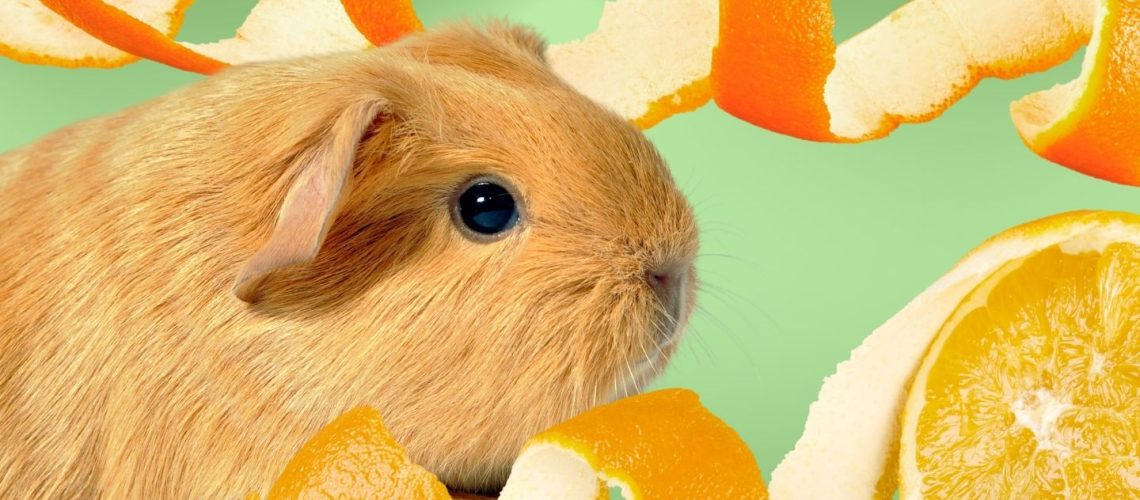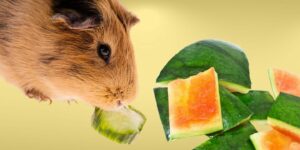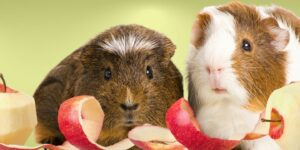No, Guinea pigs should not eat orange peels as they are not a natural part of their diet and can cause digestive issues. Additionally, orange peels contain potentially harmful essential oils and compounds. To keep your Guinea pig healthy, it's important to provide them with a balanced diet based on their natural needs and avoid common misconceptions, like feeding them orange peels. Instead, provide them with safe, fresh fruits and vegetables as occasional treats.
Introduction
Importance of a Balanced Diet for Guinea Pigs
A balanced diet is crucial for maintaining the health and well-being of your Guinea pig. Just like humans, Guinea pigs require a variety of nutrients, such as vitamins, minerals, and fiber, to thrive.
Understanding Guinea Pig's Natural Diet
In the wild, Guinea pigs primarily feed on grasses, leaves, and plant stems. Their diet is high in fiber and low in fat and sugar, which helps maintain a healthy digestive system.
Common Dietary Misconceptions for Guinea Pigs
Many people mistakenly believe that Guinea pigs can eat a variety of fruits and vegetables without any issues. While some fruits and vegetables can be beneficial to your Guinea pig's diet, not all are safe. Feeding your Guinea pig inappropriate foods, like orange peels, can lead to health problems.
The Anatomy of an Orange Peel
Components of Orange Peels
Orange peels are made up of several layers, including the outermost layer, which contains essential oils and various chemical compounds.
Essential Oils in Orange Peels
Oranges contain essential oils, such as limonene and linalool, which give oranges their distinctive smell. These oils can be harmful to Guinea pigs if ingested.
Chemical Compounds Present in Orange Peels
The outermost layer of an orange peel also contains flavonoids and other compounds, which can cause digestive issues and potential toxicity if consumed by Guinea pigs.
Potential Risks of Feeding Orange Peels to Guinea Pigs
Digestive Issues
The Role of Fiber in a Guinea Pig's Diet
Fiber is essential for maintaining a healthy digestive system in Guinea pigs. While orange peels do contain some fiber, they also contain components that can cause negative health effects.
Potential for Gastrointestinal Blockage
Feeding your Guinea pig orange peels may lead to gastrointestinal blockage, which can be life-threatening if not treated promptly.
Toxicity Concerns
D-Limonene Toxicity
D-Limonene is a naturally occurring compound found in the essential oils of oranges, which can be toxic to Guinea pigs when consumed.
Pesticide Residue on Orange Peels
Additionally, orange peels may contain pesticide residue, which can be harmful to your Guinea pig.
Allergic Reactions
Symptoms of Allergic Reactions in Guinea Pigs
Guinea pigs can develop allergies to certain substances, including components found in orange peels. Allergic reactions may manifest as itching, swelling, or difficulty breathing.
How to Identify an Allergy in Your Guinea Pig
If you suspect your Guinea pig is having an allergic reaction to a food item, remove the suspected allergen from their diet and consult with a veterinarian.
Safe Fruits and Vegetables for Guinea Pigs
Vitamin C Rich Foods for Guinea Pigs
Importance of Vitamin C in a Guinea Pig's Diet
Guinea pigs require sufficient vitamin C intake to prevent scurvy and maintain overall health.
How to Supplement Vitamin C for Guinea Pigs
Instead of orange peels, consider offering your Guinea pig small amounts of vitamin C-rich fruits and vegetables, such as bell peppers or kiwi.
Recommended Fruits for Guinea Pigs
Safe fruits include apple slices, strawberries, and blueberries. Always serve in moderation due to their sugar content.
Appropriate Serving Sizes and Frequency
Fruits should be fed in small quantities, no more than once or twice a week.
Recommended Vegetables for Guinea Pigs
Safe vegetables include leafy greens, carrots, and bell peppers.
Appropriate Serving Sizes and Frequency
Vegetables can be fed more frequently, but always in moderation to prevent gastrointestinal upset.
Tips for Introducing New Foods to Your Guinea Pig
Gradual Introduction of New Foods
Introduce new foods gradually, starting with small amounts and closely observing your Guinea pig for any adverse reactions.
Monitoring Your Guinea Pig's Reaction to New Foods
Watch for signs of gastrointestinal upset, such as diarrhea or excessive gas. If any issues arise, discontinue feeding the new food item.
Signs of Gastrointestinal Upset in Guinea Pigs
Signs of gastrointestinal upset include diarrhea, bloating, and decreased appetite.
When to Consult a Veterinarian
If you notice any concerning symptoms or behaviors in your Guinea pig, consult a veterinarian for advice and guidance.
Conclusion
Importance of Researching Before Feeding New Foods to Guinea Pigs
Guinea pig owners play a vital role in ensuring their pets receive a well-balanced and healthy diet. Before introducing new foods, research their safety and nutritional value.
The Role of Owners in Ensuring a Healthy Diet for Their Guinea Pigs
By avoiding harmful foods like orange peels and sticking to the recommended fruits and vegetables, Guinea pig owners can ensure their pets lead happy and healthy lives.





